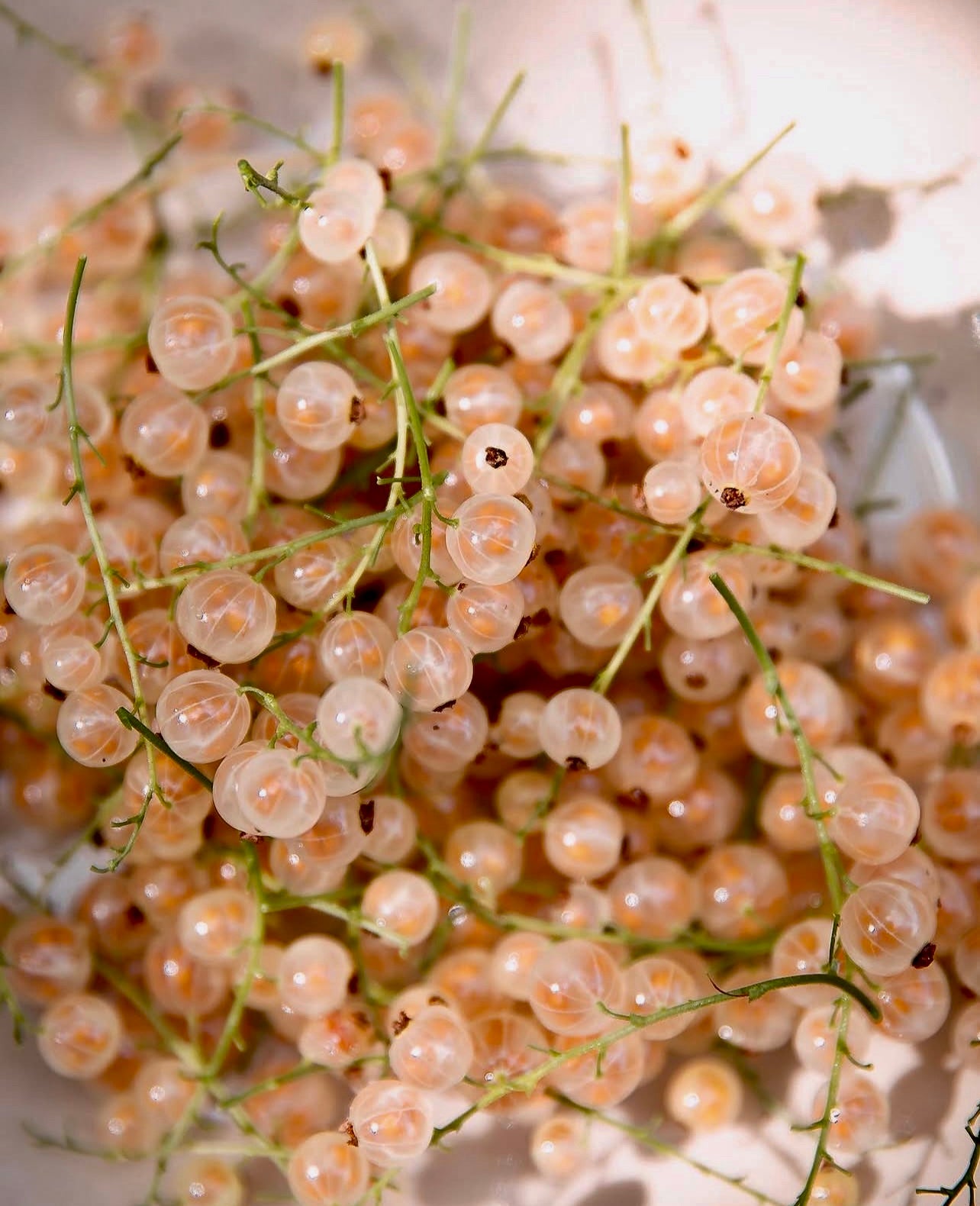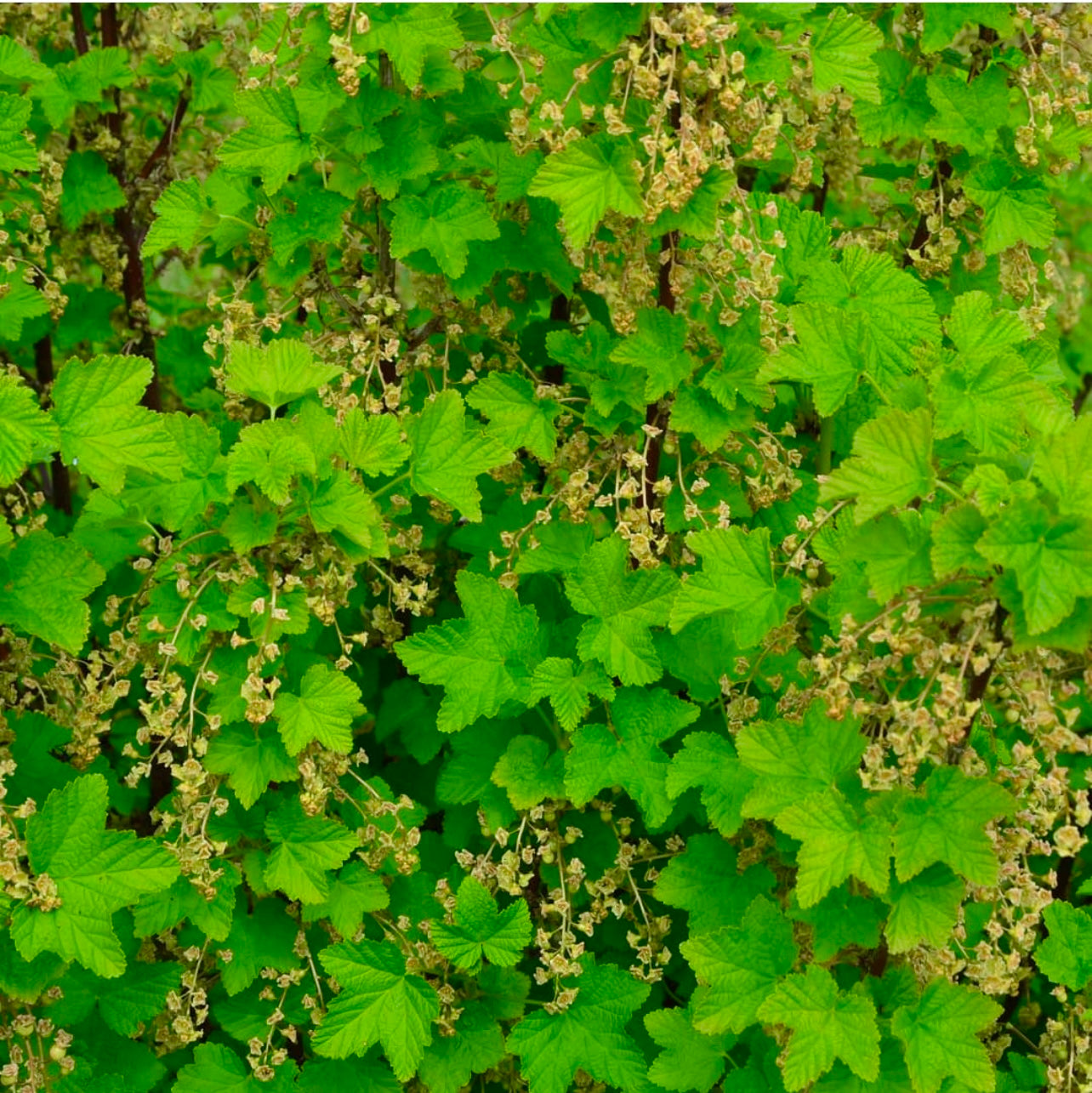White Currant
White Currant
Local Pickup Available in Harrop, BC
Couldn't load pickup availability
Why We Grow It
Why We Grow It
White Currants are an excellent choice in the garden or food forests due to their adaptability and reliable yield. Their ability to thrive in partial shade makes them ideal for layered plantings, while their shallow root systems prevent competition with deeper-rooted plants. They contribute to biodiversity by supporting pollinators and wildlife while providing nutrient-dense fruit for human consumption. Their strength in cold climates and low-maintenance needs make them a valuable component of Canadian sustainable agricultural designs and agroforestry projects.
How the Plant Grows
How the Plant Grows
White Currants grow as bushy, deciduous shrubs with multiple upright stems. In early spring, they leaf out with bright green foliage and produce small, yellow-green flowers. By mid-summer, the flowers give way to clusters of translucent white berries that ripen simultaneously, making harvesting easy. The shrubs remain productive for up to 20 years with minimal pruning.
Plant Size
Plant Size
Size at Maturity- Shrub Layer. Grows to 3-5 feet tall and 3-4 feet wide.
Current Size- Large 1'-2', 1 year old rooted cutting
Additional Info
Additional Info
White Currants are a cultivar of red currants with a milder, sweeter flavor. Historically cultivated in Europe, they have been prized for their culinary versatility and nutritional value, rich in vitamin C and antioxidants. The berries are excellent for fresh eating, preserves, desserts, and wines. In food forestry, they provide mid-season fruit and attract pollinators with their early spring flowers. Their ability to thrive in cooler climates and challenging soils makes them a resilient choice for integrated landscapes.
The White Currant is a compact, cold-hardy shrub known for its translucent, sweet-tart berries that are both delicious and visually striking. Perfect for food forests, permaculture systems, and homesteads, it thrives in temperate climates, providing consistent harvests of nutrient-dense fruit. Its attractive foliage and clusters of berries make it as ornamental as it is productive, supporting both biodiversity and food security.
Share


Plant Highlights
-

Water
Moderate; requires consistent moisture during establishment and fruiting.
-

Pollination
Self-fertile but benefits from cross-pollination for larger yields.
-

Soil
Prefers moist, well-drained soils; tolerates slightly acidic to neutral pH (6.0-7.0).
-

Years to Bear
Produces fruit in 1-2 years after planting.
-

Hardiness
Zone 3, tolerating temperatures as low as -40°C.
-

Solar
Tolerates partial shade to full sun, with optimal yields in full sun.
Subscribe to our emails
Lots of Free Growing Info. Be the first to know about new plants and exclusive discounts.








